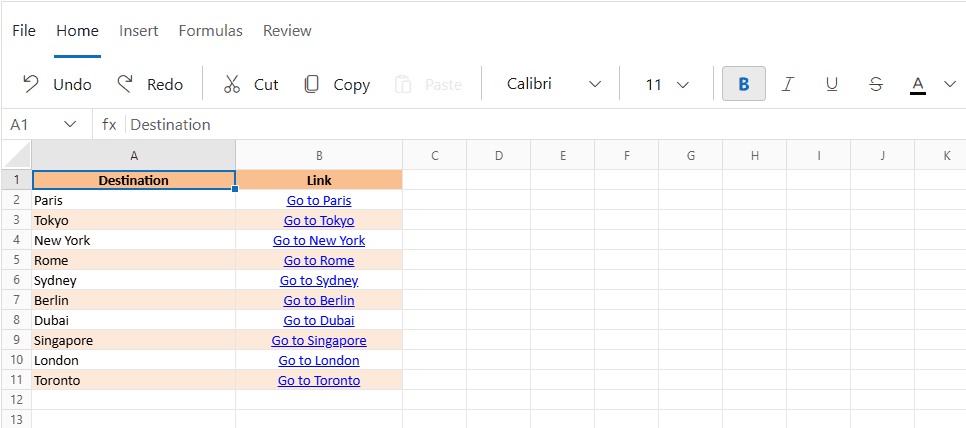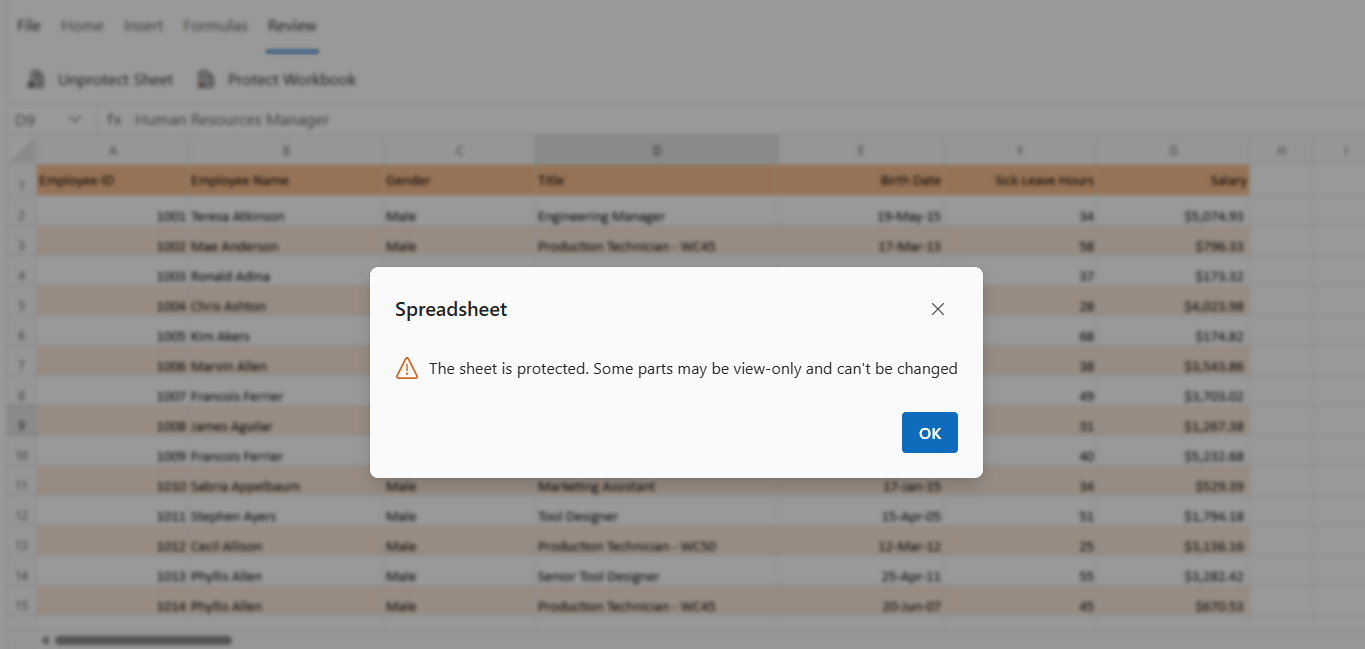Cell editing in the Blazor Spreadsheet component
5 Aug 20253 minutes to read
Cell editing in the Blazor Spreadsheet component enables modification of cell content either directly within the spreadsheet or through the formula bar. This feature is enabled by default and can be controlled using the AllowEditing property. To disable or enable cell editing, set the value of this property accordingly.
Edit cell
Cell editing can be initiated directly through the UI using any of the following options:
- Double-click a cell to enter edit mode.
- Press F2 to activate editing for the selected cell.
- Use the formula bar to modify the cell’s contents.
- Press BACKSPACE or SPACE to clear the cell and begin editing.
For additional keyboard shortcuts related to cell editing, refer here.
Update cell
When a cell is in an editable state, the updated content can be saved using one of the following methods:
- Click any cell other than the one currently being edited.
- Press Enter or Tab to save changes and move the selection.
Update cell programmatically
Cell updates can be performed programmatically using the UpdateCellAsync method, which supports values such as strings, numbers, booleans, and formulas. This method modifies the content of a designated cell and is suitable for tasks requiring precise changes, such as updating statuses or values in specific locations. The cell address must include the sheet name—for example, Sheet1!A1—to enable updates across different sheets within the same workbook.
If a cell address is incorrectly formatted, refers to a non-existent sheet, or lies outside the valid range, the update is skipped without triggering an error. When a range is specified, such as A1:B5, the method automatically assigns the provided value to each cell within that range, allowing efficient batch updates.
| Parameter | Type | Description |
|---|---|---|
| cellAddress | string | Specifies the address of the cell to update, including the sheet name (e.g., Sheet1!A1). Updates can be performed across different sheets. Invalid addresses—such as those referencing non-existent sheets or using improperly formatted cell references—are skipped without error. |
| cellValue | object | Defines the new value to assign to the cell. Supported types include strings, numbers, booleans, and formulas (e.g., =SUM(A1:B1)). When a range is specified (e.g., A1:B5), the value is automatically applied to all cells within the range. |
@using Syncfusion.Blazor.Spreadsheet
<button @onclick="UpdateCell">Update Cell</button>
<SfSpreadsheet @ref=SpreadsheetRef DataSource="DataSourceBytes">
<SpreadsheetRibbon></SpreadsheetRibbon>
</SfSpreadsheet>
@code {
public byte[] DataSourceBytes { get; set; }
public SfSpreadsheet SpreadsheetRef;
protected override void OnInitialized()
{
string filePath = "wwwroot/Sample.xlsx";
DataSourceBytes = File.ReadAllBytes(filePath);
}
private async Task UpdateCell()
{
// Updates cell A3 with a product name.
await SpreadsheetRef.UpdateCellAsync("Sheet1!A3", "Tablet");
// Updates cell B3 with a numeric value.
await SpreadsheetRef.UpdateCellAsync("Sheet1!B3", 799);
// Updates cell C3 with a formula.
await SpreadsheetRef.UpdateCellAsync("Sheet1!C3", "=SUM(A3:B3)");
}
}Cancel editing
To exit edit mode without saving changes, press the ESCAPE key. This action restores the original content of the cell and cancels any modifications made during editing.

Cell editing in protected sheet
In a protected sheet, only the unlocked ranges can be edited based on the sheet’s protection settings. Attempting to modify a locked range triggers an error message, as shown below:

NOTE
For more information on worksheet protection, refer here.